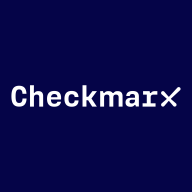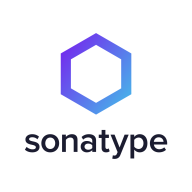

Checkmarx One and Sonatype Lifecycle are two leading solutions in the software security sector. Checkmarx One edges forward in terms of customer service and pricing, while Sonatype Lifecycle has a superior feature set, making it a preferred option for comprehensive security.
Features: Checkmarx One provides customizable scanning options, seamless integration with various development environments, and streamlined workflows. Sonatype Lifecycle offers comprehensive vulnerability tracking, extensive open-source governance tools, and in-depth security analysis.
Room for Improvement: Checkmarx One could improve its reporting capabilities for more detailed insights, enhance user customization options, and expand its feature set. Sonatype Lifecycle can refine its initial setup process, improve user training resources, and increase customization flexibility.
Ease of Deployment and Customer Service: Checkmarx One is noted for its simple deployment and responsive customer support, resulting in quick issue resolution. Sonatype Lifecycle deployment can be intricate, but its support team provides knowledgeable guidance once users become familiar with the product.
Pricing and ROI: Checkmarx One is viewed as cost-effective, with straightforward pricing and rapid ROI, suitable for small to medium enterprises. Sonatype Lifecycle may have a higher initial expense, but offers long-term ROI through enhanced security, appealing to larger organizations.
We have seen cost savings and efficiency improvements as we now know what happens in what was previously a black box.
They are helpful when we raise any tickets.
It handles high availability at the database level, such as synchronizing JFrog repository servers without complicated configurations.
Sonatype Lifecycle is very stable, especially in the binary repository management use case for managing binary artifacts.
We also noticed a lack of detailed information for configuring Sonatype Lifecycle for high availability and data recovery.
For larger numbers like our case with 1,000 user licenses, JFrog becomes much more cost-effective, roughly ten times cheaper than Sonatype.
The integration into our CICD pipeline enables us to continuously monitor code changes and identify new vulnerabilities.
The most valuable feature for us is Sonatype Lifecycle's capability in identifying vulnerabilities.


Checkmarx One is an enterprise cloud-native application security platform focused on providing cross-tool, correlated results to help AppSec and developer teams prioritize where to focus time and resources.
Checkmarx One offers comprehensive application scanning across the SDLC:
Checkmarx One provides everything you need to secure application development from the first line of code through deployment and runtime in the cloud. With an ever-evolving set of AppSec engines, correlation and prioritization features, and AI capabilities, Checkmarx One helps consolidate expanding lists of AppSec tools and make better sense of results. Its capabilities are designed to provide an improved developer experience to build trust with development teams and ensure the success of your AppSec program investment.
Sonatype Lifecycle is an open-source security and dependency management software that uses only one tool to automatically find open-source vulnerabilities at every stage of the System Development Life Cycle (SDLC). Users can now minimize security vulnerabilities, permitting organizations to enhance development workflow. Sonatype Lifecycle gives the user complete control over their software supply chain, allowing them to regain wasted time fighting risks in the SDLC. In addition, this software unifies the ability to define rules, actions, and policies that work best for your organizations and teams.
Sonatype Lifecycle allows users to help their teams discover threats before an attack has the chance to take place by examining a database of known vulnerabilities. With continuous monitoring at every stage of the development life cycle, Sonatype Lifecycle enables teams to build secure software. The solution allows users to utilize a complete automated solution within their existing workflows. Once a potential threat is identified, the solution’s policies will automatically rectify it.
Benefits of Open-source Security Monitoring
As cybersecurity attacks are on the rise, organizations are at constant risk for data breaches. Managing your software supply chain gets trickier as your organization grows, leaving many vulnerabilities exposed. With easily accessible source code that can be modified and shared freely, open-source monitoring gives users complete transparency. A community of professionals can inspect open-source code to ensure fewer bugs, and any open-source dependency vulnerability will be detected and fixed rapidly. Users can use open-source security monitoring to avoid attacks through automatic detection of potential threats and rectification immediately and automatically.
Reviews from Real Users
Sonatype Lifecycle software receives high praise from users for many reasons. Among them are the abilities to identify and rectify vulnerabilities at every stage of the SDLC, help with open-source governance, and minimize risk.
Michael E., senior enterprise architect at MIB Group, says "Some of the more profound features include the REST APIs. We tend to make use of those a lot. They also have a plugin for our CI/CD.”
R.S., senior architect at a insurance company, notes “Specifically features that have been good include:
• the email notifications
• the API, which has been good to work with for reporting, because we have some downstream reporting requirements
• that it's been really user-friendly to work with.”
"Its engine itself is most valuable in terms of the way it calculates and decides whether a security vulnerability exists or not. That's the most important thing. Its security is also pretty good, and its listing about the severities is also good," says Subham S., engineering tools and platform manager at BT - British Telecom.
We monitor all Application Security Tools reviews to prevent fraudulent reviews and keep review quality high. We do not post reviews by company employees or direct competitors. We validate each review for authenticity via cross-reference with LinkedIn, and personal follow-up with the reviewer when necessary.